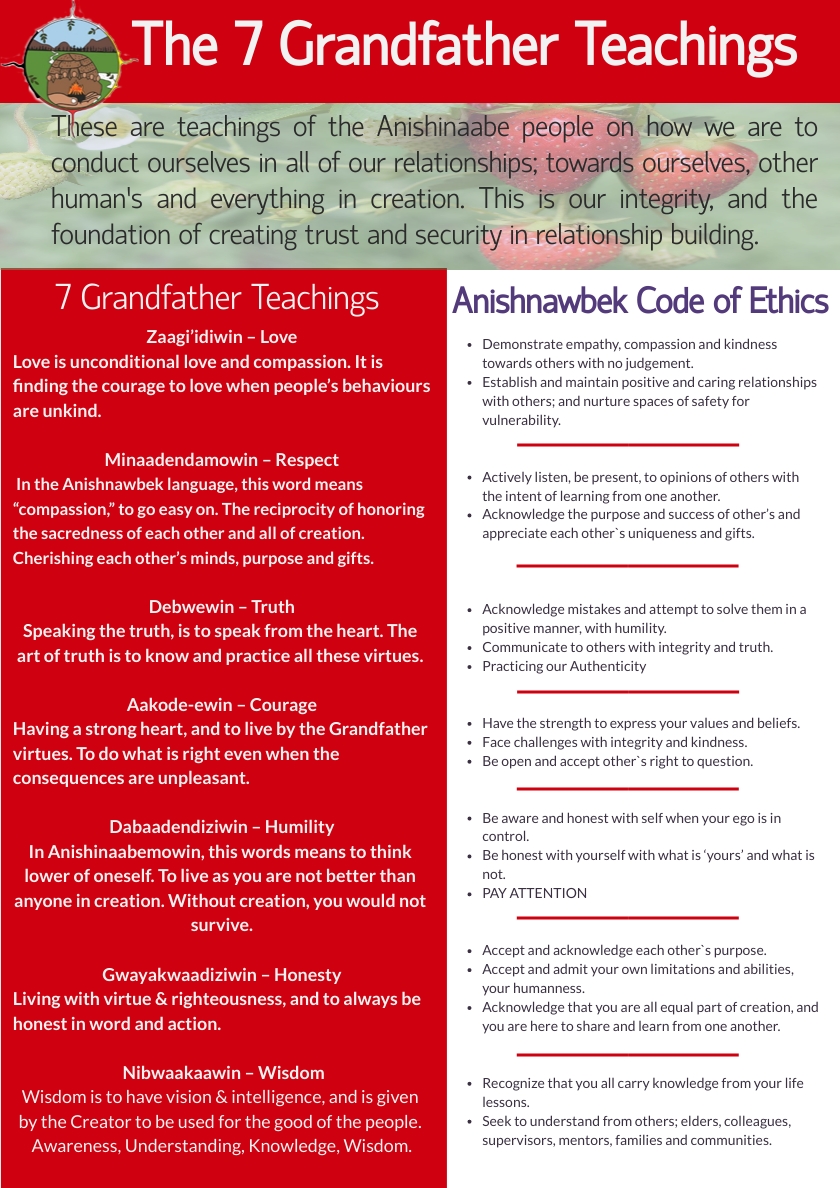2
Learning Objectives
Circles are symbolic meaning of life in Anishinaabe Culture. This session will be exploring the use of circles that create a safe space for every individual to have a voice. This is an integral part of building trust and community.
- Explore symbolism and meaning;
- Cultural Safety;
- Consideration for responsibility & appropriation;
- Introduction to group safety;
- Identify different types of circles and uses;
- Defining rules of engagement
- Discussion of “safe space” and trust building;
- Reviewing the 7 Grandfather Teachings and put into practice.
Topic Sensitivity
-
The topics will be heavy due to the sensitivity of the discussion and themes of the training. You may feel “triggered”:
- Triggers are anything that remind someone of previous trauma. To be triggered is to have an intense emotional or physical reaction, such as a panic attack, after encountering a trigger.([1]).
- If you need to excuse yourself at any time, please let our team know if you need help. We will be creating safe spaces, for these topics to be discussed in depth.
- The designated place for used tissues is in bin outside of circle. Please collect your own tissues and dispose of them in the bin. The Cultural Team will burn it in the sacred fire. By doing this, your grief and grievances will be honored.
Creating a Safe Space
When we gather in a circle, we are all equal points from the center. That means there is no hierarchy. Used properly, a circle it is a great tool for creating a welcoming space for discussions.
- It is important to create a safe space for people to want to share, listen and learn.
- This is what helps to build the necessary foundation towards TRUST.
Safe Space
Facilitator Tip: Role Model how to create rules with intentions as a group. Speak to the benefits when used with Community.
- Pay attention to participants responses, are they coming from a place of feelings (heart) or are they stuck in their head (analytic)?
- Observe participants as they move through the training, and if their responses change.
- Hang a piece of poster paper up where everyone can see.
- In a circle format, each participant contributes 1 value/quality/attribute/intention/vision to the groups safe space agreement.
- Ogitchidaa Kwe or Shkaabewis writes list with marker.
Example of Safe Space Qualities:
| No Judgement
Mindfulness Kindness |
Open Heart
Love Understanding |
Respectfulness
Positivity Humility |
Listen
Compassion Empathy |
Example of Intentions of a Safe Space:
| Culturally Safe
Learning Inspiration |
Remembering
Resourceful Thoughtful |
Resiliency
Clarity Cohesiveness |
Nurturing
Comforting Respectful |
The 7 Grandfather Teachings
Rules of Engagement:
Rules of engagement are in place to keep a safe space and to give everyone a voice. These include:
-
Tobacco offering to Knowledge Keeper/facilitator by person requesting circle; *relevant detail is imparative.*
- Terms are defined before circle starts; this helps to build a foundation of trust;
- Space is cleansed by smudge, and it is offered to participants;
- Confidentiality – Once sharing has began, the circle is CLOSED, people not welcome to enter;
- One person speaks at a time, running in a clockwise direction;
- We give respect and kindness by:
- Listening
- No profanity
- No interrupting
- If clients present, worker needs to be present when possible; and
- When emotions are high, the participant is invited to go to the side for one on one with worker, or with additional Culture Staff. The facilitator and can not leave the circle when in progress.
- When it is known that the subject will be intense, additional cultural service providers may be requested to be available.
The Circle
Facilitator Tip:
- Introduce the symbolism of the circle.
- The Medicine Wheel has many interpretations for various Nations, and communities.
- Explain where you received your teachings.
The Circle is of great symbolism, it is directly from the Creation Story, with the creation of the Sun, Moon and the Earth. The circle was complete in a clockwise direction and is represented in Anishinaabe Ceremonies.
The Circle is a symbolism of many indigenous peoples, each having their own interpretation of meaning and uses. These teachings are represented in what is known as the Medicine Wheel, which explains our wellbeing in four quadrants.
Four quadrants to our wellbeing:
- Waabnong – East – Spiritual Intelligence
- Zhaawnong – South – Emotional Intelligence
- Epngishmok – West – Physical Intelligence
- Giiwednong – North – Mental Intelligence
The example below includes other levels of creation for each direction:
|
|
|
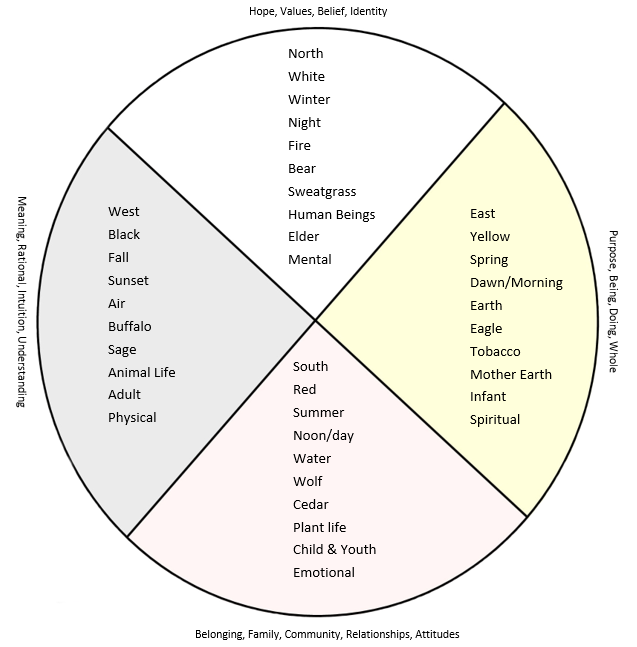
Facilitated Circles and their benefits?
Facilitator Tip:
- Opportunity to speak about your experience with circles, sharing how powerful they can be.
- Strongly encourage Knowledge Carriers to give examples of each type of circle from personal experiences.
- Allow time for participants to share.
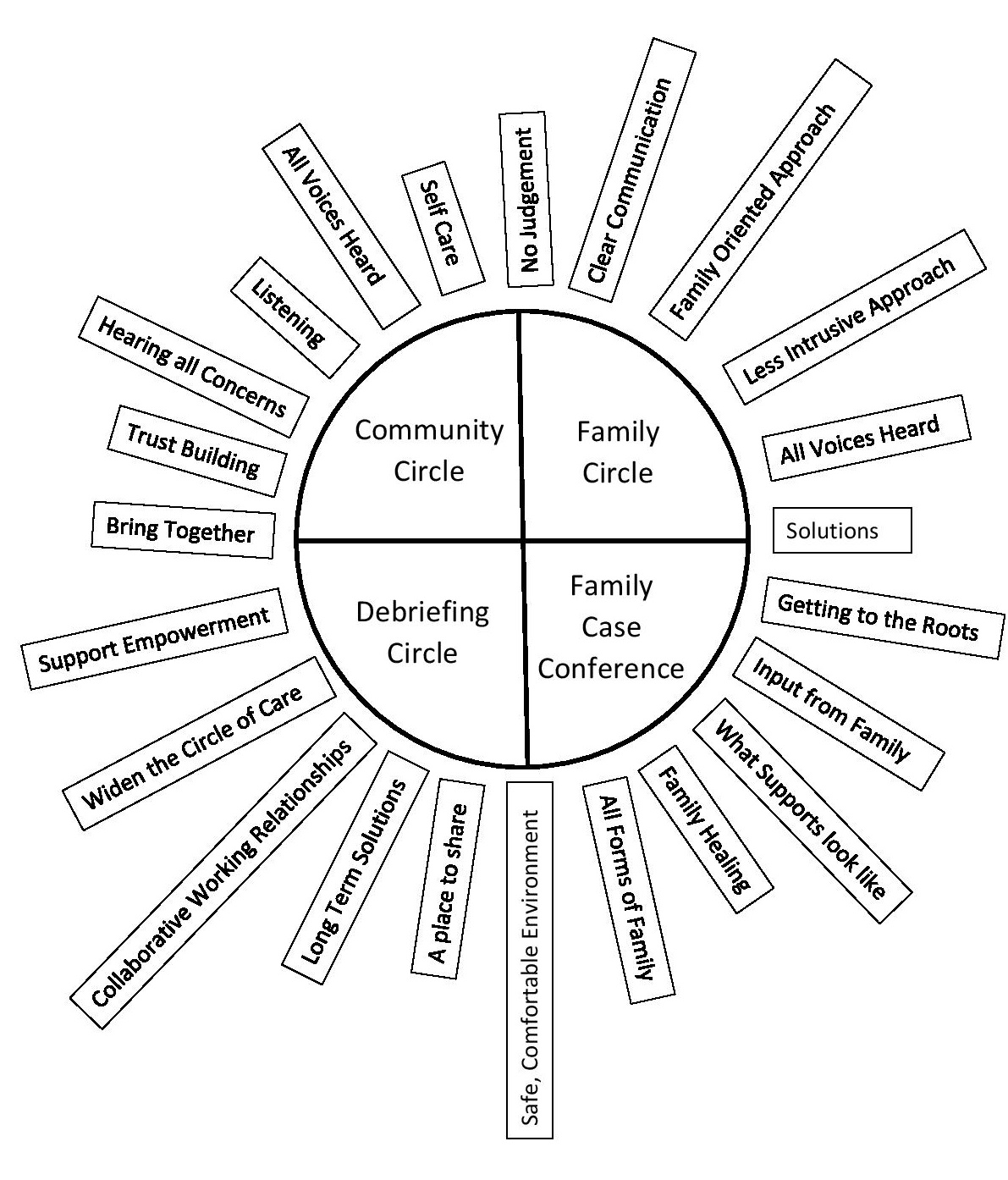
Requesting a Circle
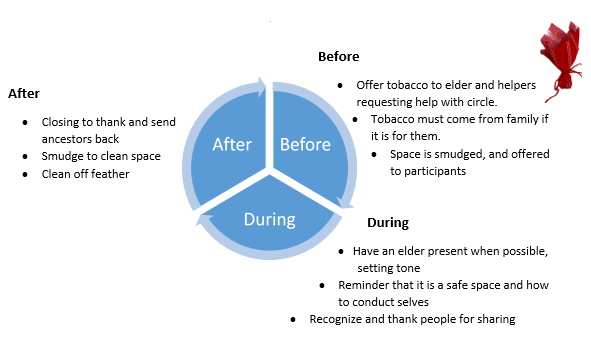
Nogdawindamin Cultural Services Circle Referrals
There are four (4) types of circles that and can be requested. The following chart gives outlines and examples of these circles.
It is ESSENTIAL for family members to give consent and to be apart of this process as much as possible.
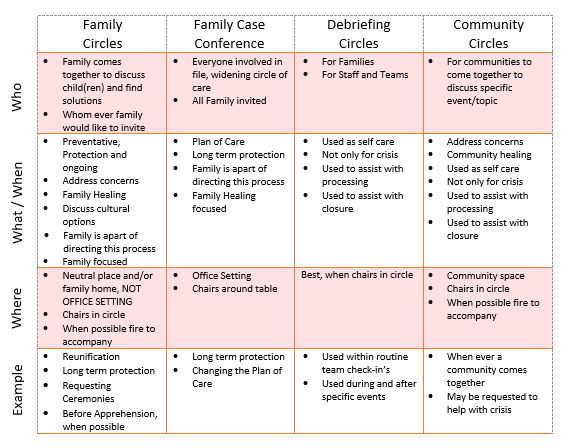
Media Attributions
- 7-Grandfather-Teachings V3
- Medicine Wheel filled english
- Types of circles and benefits
- Requesting a Circle
- 4 Types of Facilitated Circles
- dictionary.com ↵
